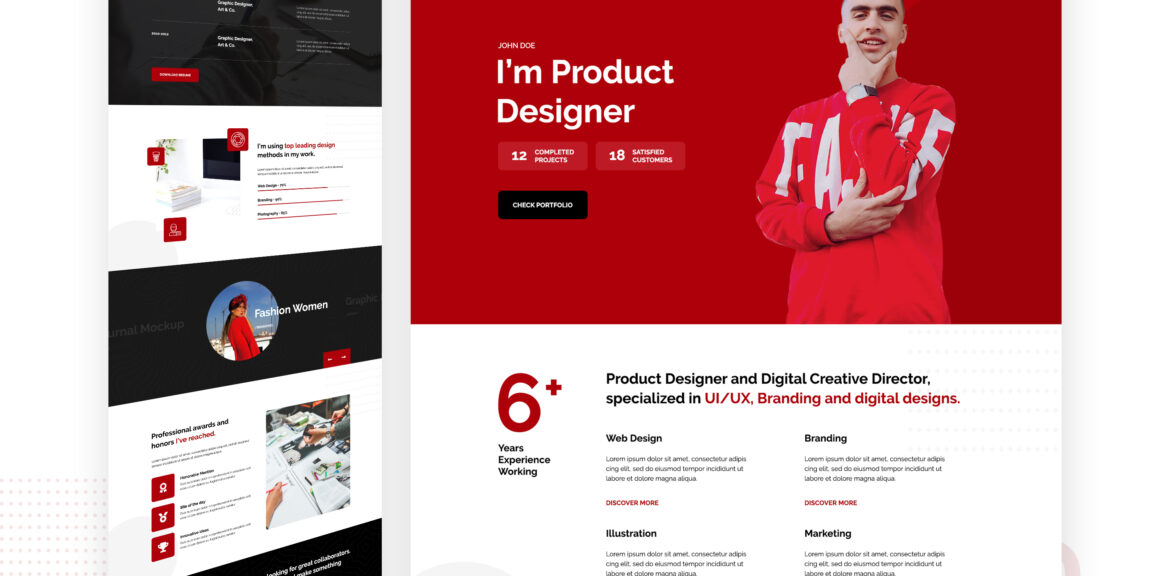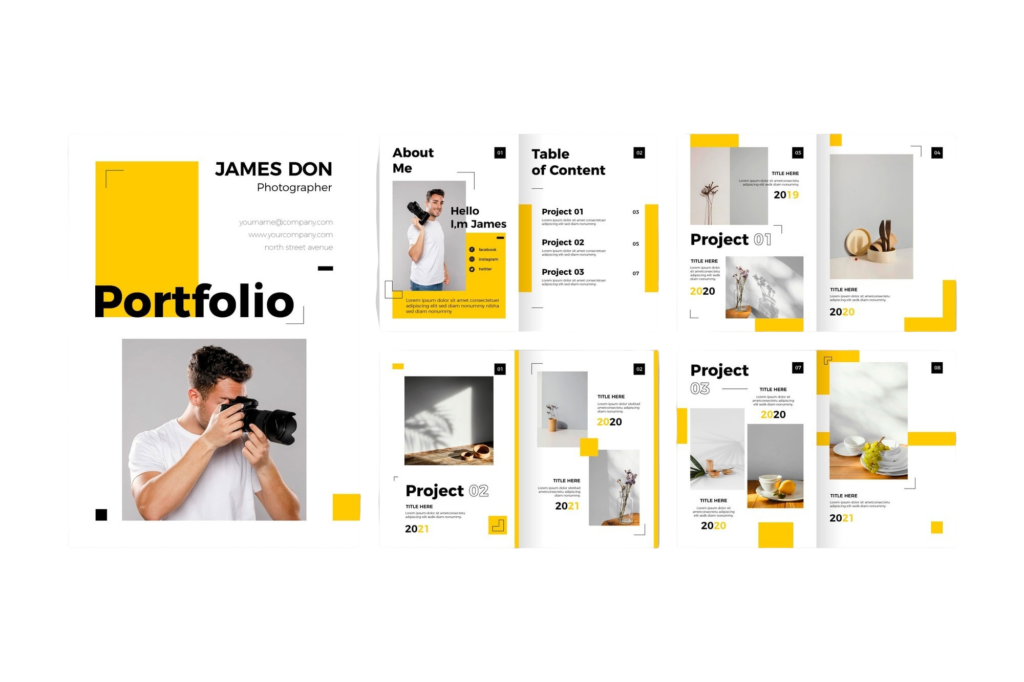
The portfolio would be like a visual resume, showcasing your skills, creativity, and ability to deliver real-life solutions. Whether a novice developer or an expert, an organized and interesting portfolio will always make you stand out among the workers. Here, in association with Digi Dervish- an effective partner for digital services, we share the ways of creating your professional web developer portfolio, which stays in the audience’s mind.
Why Do You Need a Web Developer Portfolio?
Showcase your own creative and technical skills in a portfolio. Here are the various reasons why every web developer should have one:

- Showcase Your Skills: Showcase your skills across programming languages, frameworks, and tools.
- Build Credibility: Demonstrate real-life projects that prove your capabilities.
- Attract Clients and Employers: A portfolio can be your most effective marketing weapon toward potential clients or bring you your dream job.
- Track Personal Growth: Track your progress and help you understand your place in development.
Essential Components of a Web Developer Portfolio
A successful portfolio is one that is well thought out, planned to the minute detail. Let us take a sneak peek at vital ingredients:
1. Personal Introduction
- Who You Are: What is your background, interests, and your journey to web development?
- Professional Photo: Use high-quality, professional image to build trust.
- Tagline or Mission Statement: One catchy line to summarize all your goals and value proposition:
2. Showcase of Skills
- Technical skill sets are:
- Learn HTML, CSS, and JavaScript.
- Works with the framework: React, Angular, Vue
- Backend Technologies: Node.js, Django, Ruby on Rails
- Database: MySQL and MongoDB
- Tools: Git, Docker, Figma
- Do not forget soft skills, such as: communication, teamwork, and problem-solving.
3. Portfolio Projects
- Diversity: Feature various project types, from single-page applications to e-commerce websites.
- Case Studies: Provide a detailed description of specific projects to outline topics like:
- The problem or objective
- Your approach
- Tools and technologies used
- Outcome and results
- Interactive Demos: Open your work for visitors to interact with via live previews or sandbox environments.
4. Client Testimonials or References

- Positive feedback from their clients or coworkers augments their credibility.
- Include quotes, LinkedIn endorsements, or video testimonials.
5. Contact Information
- Give Prospective Clients or Employers a clear way to contact You:
- Email address
- Phone number
- Links to LinkedIn, GitHub or other Professional Profiles
- Add a Contact Form for Easy Contact.
6. Blog Section
- Discuss industry trends, tutorials, and lessons learned.
- This shows your skills and zeal to stay updated in the industry.
7. Resume Download
- So here goes a possibility to download your resume in PDF form for offline reading.
8. Custom Design and Branding
- Colors, type styles, and layouts must be consistent.
- You can make your portfolio memorable with a unique logo.
Step-by-Step Guide to Building Your Portfolio
Step 1: Define Your Goals
- Define the audience you want to draw in—clients, employers, or both.
- Select kinds of works and kinds of skill sets to showcase.
Step 2: Choose the Right Platform
- Custom Websites: Create your entire portfolio using HTML, CSS, and JavaScript:
- Portfolio Builders: Like Squarespace, Wix, and WordPress, for convenience.
- Developer-Specific Platforms: Include GitHub Pages or Netlify for hosting.
Step 3: Design Your Layout
- Design the structure of your portfolio using Figma or wireframed ways.
- Prioritize intuitive navigation and responsiveness for user experience.
Step 4: Add Content
- Offer engaging copy that reflects personality and professionalism.
- Optimize images and media for fast loading.
Step 5: Implement SEO Best Practices
- Title, write a meta description, and provide alt tags.
- Include relevant key elements that increase visibility in search engines.
Step 6: Test and Launch
- Test your portfolio on multiple devices and browsers.
- Share it among peers or mentors.
- Deploy. and publish across several media platforms such as LinkedIn and GitHub.
Best Practices for a Web Developer Portfolio
- Keep It Simple: Don’t clutter it; showcase your best works.
- Be Selective: Emphasis should be on quality, not quantity-follow the projects that best suit you.
- Stay Current: Always add to your portfolio fresh-new projects and skills.
- Engage Your Audience: Animations, interactivity, and gamification will be used where necessary.
- Ensure Accessibility: Follow WCAG guidelines for making your portfolio inclusive.
Common Mistakes to Avoid
- Overloading with Content: Be brief and straight to the point.
- Ignoring Mobile Users: Make the portfolio well-designed for mobile devices.
- Lack of Personalization: Avoid using templates that are not personalized.
- Poor Grammar or Typos: Proofread a lot, so you can maintain professionalism.
- Broken Links or Demos: Check it regularly for any errors and fix them.
How Digi Dervish Can Help
Digi Dervish-the haven for web developers, making them out-and-out masters in their niche. We provide:
- Custom Portfolio Design: Custom solutions to reflect your individual practice.
- SEO Optimization: Enhance your portfolio in search results.
- Technical Support: Total coverage-from hosting to troubleshooting.
- Career Guidance: Expert guidance on how to go about web development.
Accelerate your web development journey today with Digi Dervish!
People Also Ask
What kind of portfolio should a web developer have?
Demonstrate the technical prowess, creativity, and problem solving that a web developer possesses through a portfolio. Include completed projects, code snippets, client praise, and links to uploaded live websites or applications. One should aim for quality over quantity and demonstrate the ability to work with a variety of technologies or frameworks.
How to create a portfolio for web development?
- Choose a Platform: Utilize personal hosting, GitHub Pages, or portfolio building sites like WordPress.
- Highlight Key Projects: Showcase the best work you have done with detailed case studies and links.
- Demonstrate Skills: Include coding samples, frameworks and tools you have mastered.
- Make It Responsive: Make sure that your portfolio has mobile capabilities.
- Add Contact Information: It can be easy for clients or employers to reach you.
Do you need a portfolio for web design?
Definitely a portfolio is a requirement for web design to be able to show one’s creativity, aesthetic sense, and technical skills. Potential clients or employers have an idea of what your work is and their possibility of hiring you based on style.
How do I write about me in a web developer portfolio?
Construct a short “About Me” section detailing your skills, experiences, and passion for web development, including your specialties, tools used, career goals, and keeping it both professionally impersonal and personable, ending with a call to contact you.

Conclusion
A portfolio for a web developer can be one of those statements about your potential and hopes, not merely an assemblage of work. This guide has all you need to follow in order to produce quality portfolios with respect to importance and engagement, having opened great doors to opportunities. Remember, Digi Dervish stands alongside you. Let’s put our minds together to build something exceptional!



